Skiing the Dolomites on a Guided Ski Safari
- September 18, 2024
- 6 Min Read
Italy’s Dolomites are having a moment. It’s easy to see why — they belong to the Alps, with all the snow-crowned peaks, sloping meadows and glassy lakes that their geography implies, yet they feel totally distinct from classic Alpine destinations such as Zermatt and St. Moritz. Part of the Austro-Hungarian Empire before Italy annexed it during World War I, the area has clung tightly to its roots while absorbing the Italian ardor for la dolce vita. Its unspoiled landscape and rich cultural traditions, some of which descend from ancient local tribes, earned it UNESCO World Heritage Site status in 2009.
Many travelers know the Dolomites as a summer playground for hiking, biking, mountaineering and rafting, but it’s every bit as pleasurable in the cold months. Dolomiti Superski, a group of 12 neighboring ski resorts all covered by a single pass, boasts a network of well-groomed pistes, convenient lifts, picturesque villages and remote rifugi (small huts tucked high in the mountains). While you could enjoy a conventional ski vacation based at just one Dolomites resort, consider something different: a guided ski safari through the region.
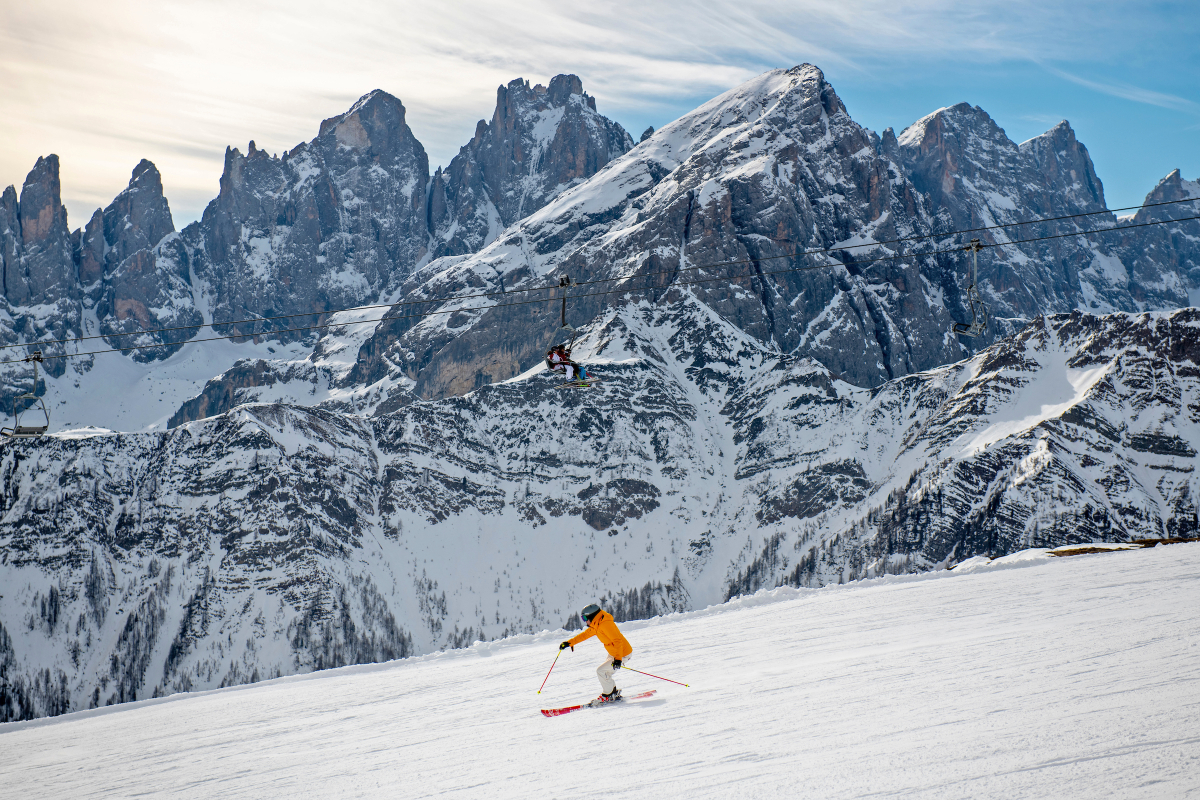
Skiing the Dolomites: Natural Splendor, Authentic Charm
A Varied Ski Safari Itinerary
So what is a ski safari? The term arises not from tented camps or wildlife spotting, but because a guide leads guests from place to place on a multi-day itinerary, schussing down fresh slopes and taking in the change of scenery before ending each evening at a new home base. Essentially, it’s a snowy cousin of hut-to-hut hiking.
“That’s the soul of this itinerary,” explains our vetted Dolomites travel partner, who specializes in ski safaris and also offers backcountry and cross-country skiing, snowshoeing and other mountain adventures. “You’re not just skiing, but you’re having an entire experience. It’s really a deep dive into the culture, into the different valleys, different ways to approach the mountain. It’s a very small place, the Dolomites, but it’s unique.”
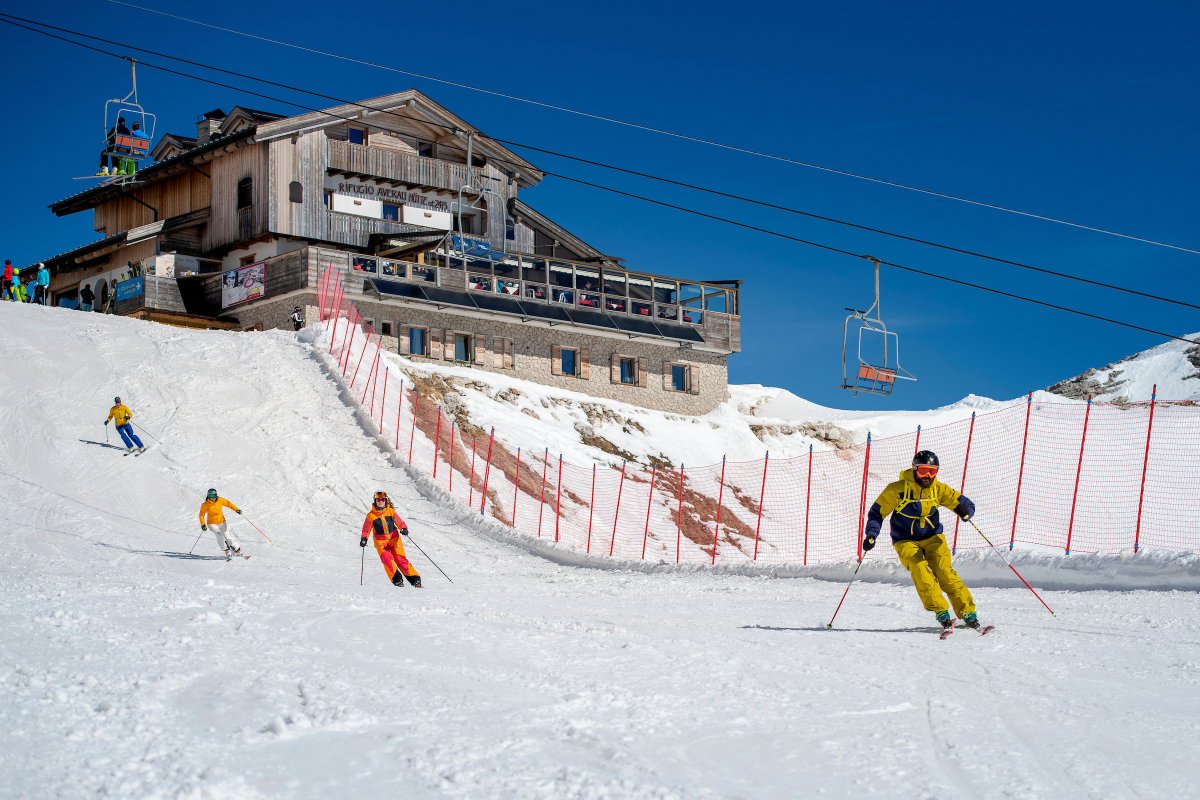
Accommodations with a Sense of Place
One thing that sets a ski safari apart from a more traditional ski vacation is where you lay your head each night. Our partner works with a hand-selected collection of 4- and 5-star hotels and cozy rifugi — all owned and run by area families — that they can mix and match to suit guests’ preferences. “You can have a trip combining just hotels or you can have a mix of hotels and rifugi,” she says. Housed in villages such as Cortina d’Ampezzo, Val Gardena and Val Badia, the hotels are small and independent with a strong regional feel, ideal for skiers who prefer a certain level of services and amenities without sacrificing authenticity. For luxury clients who are up for a splurge, our partner can book a private ski chalet as well.
Let us take care of the details so you can savor the journey.
Tell us where you’d love to go, and we’ll pair you with an expert Travel Advisor who handles the planning from beginning to end: custom itineraries, private guides, immersive local experiences and handpicked hotels. Click to get started!
Rifugi vary in size and style. Some are reachable only on foot, by snowmobile or by cable car, but guests don’t have to carry anything besides their skis, as the guide handles luggage transfers and other logistics. At the higher end, rifugi can have as many as seven separate bedrooms with a hot tub or sauna in each, while more rustic versions offer shared accommodations and few frills. There may be a communal open-air hot tub for which you can book a slot in advance — a magical way to unwind from a day of carving turns. “You find yourself alone in the dark of the night just sipping your Prosecco with the stars above you, and enjoying this hot tub with total silence around,” our partner says.
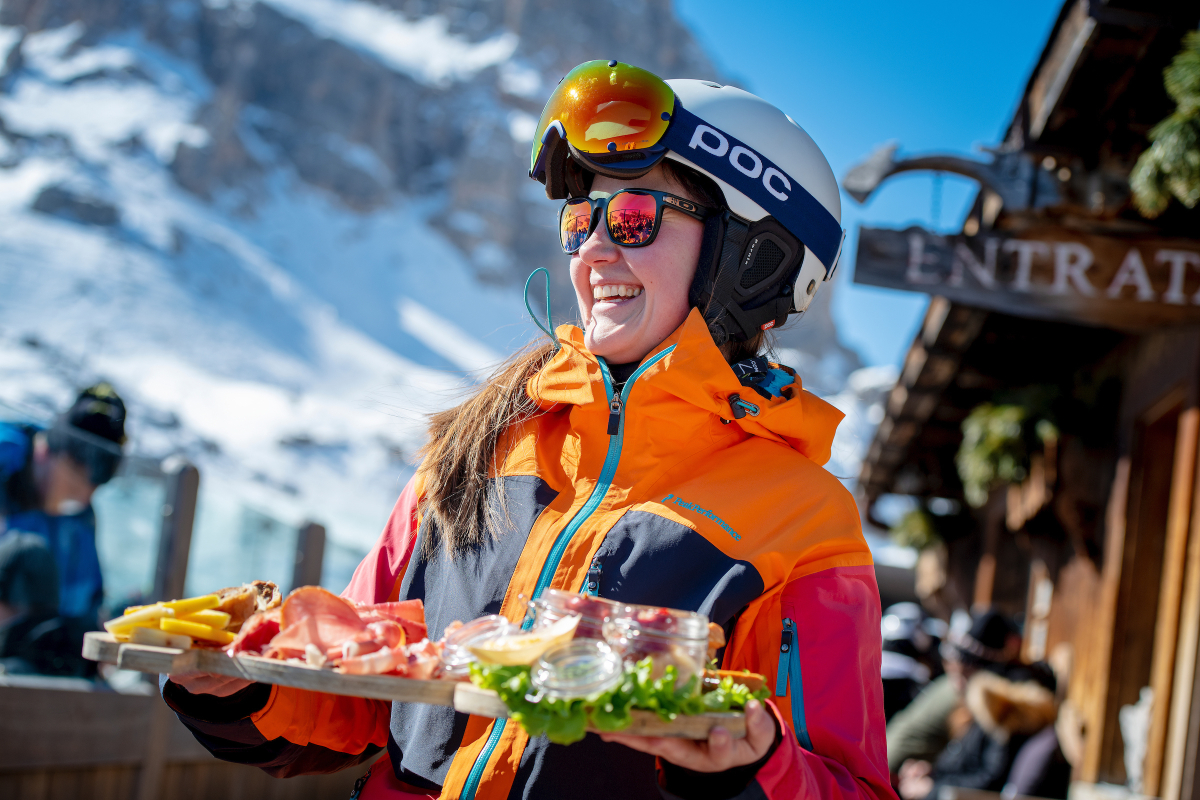
This being Italy, food and wine are central to the experience no matter where you stay. Many properties hold cooking classes or wine tastings, often led by the owners or their relatives. “They still [perpetuate] the traditions every day,” our partner says, adding that it’s typical to be greeted by the family matriarch and find her son in the kitchen chopping ingredients for the evening’s repast, or visit with Nonna as she prepares a traditional ravioli dish. “It’s very, very authentic.”
As important as sharing the meal, she adds, is forging a connection with the hosts. “I think the experience itself is also an effect of meeting these people and hearing stories from them and learning about their regular life,” she says. “All these places are handpicked by us, so we know the people very well — we’ve been working with these partners for ages now. We’re even friends.”
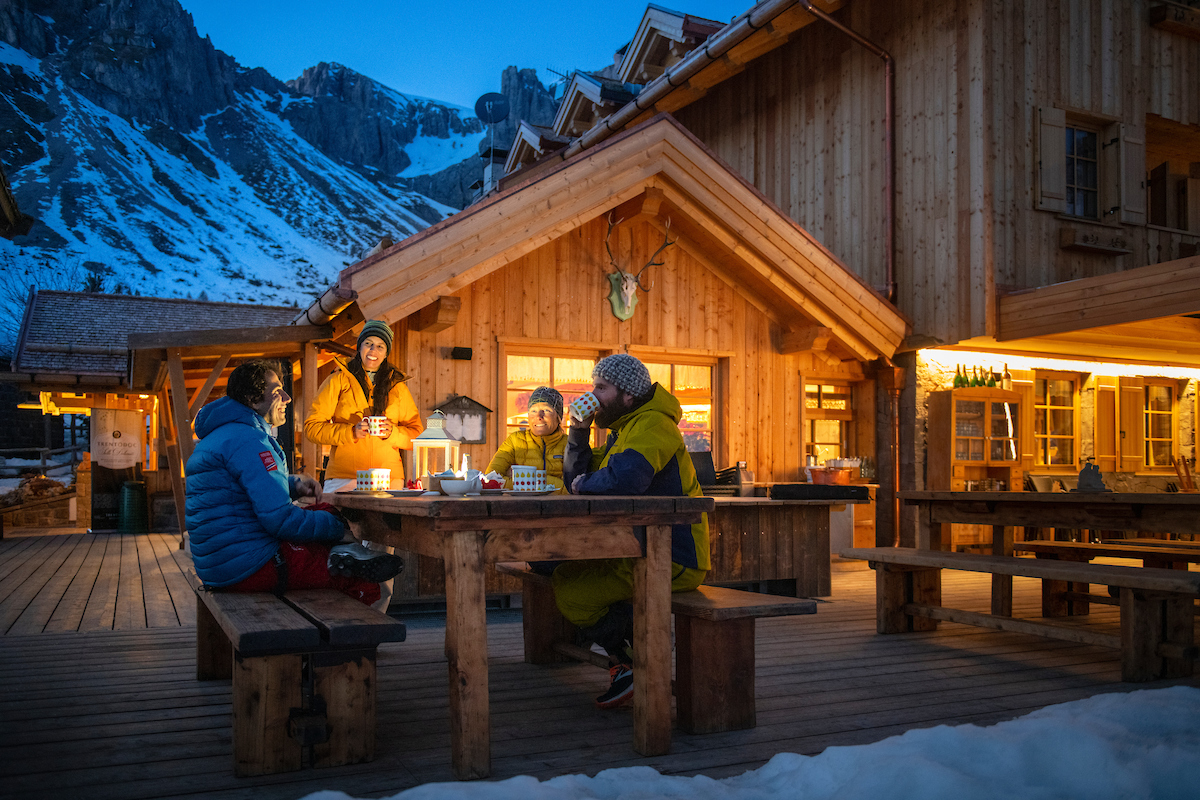
Expert, Enthusiastic Guides
Among the high points of the ski safaris are the guides who lead them. “They have international certificates and they are very well aware of every little corner of this area,” our partner says. “So they are really the ones making a big difference on a trip. They’re very passionate, experienced mountain enthusiasts and they are able to translate this passion they have to the clients.”
Part of the guides’ value lies in making adjustments on the move as conditions dictate. For instance, our partner has had clients request a couple of off-piste days on an otherwise on-piste itinerary, and she puts her trust in her team to determine whether requests like this are possible given the weather and terrain. “It’s not something we can really predict in advance,” she says. “Everything is in the hands of the guide.”
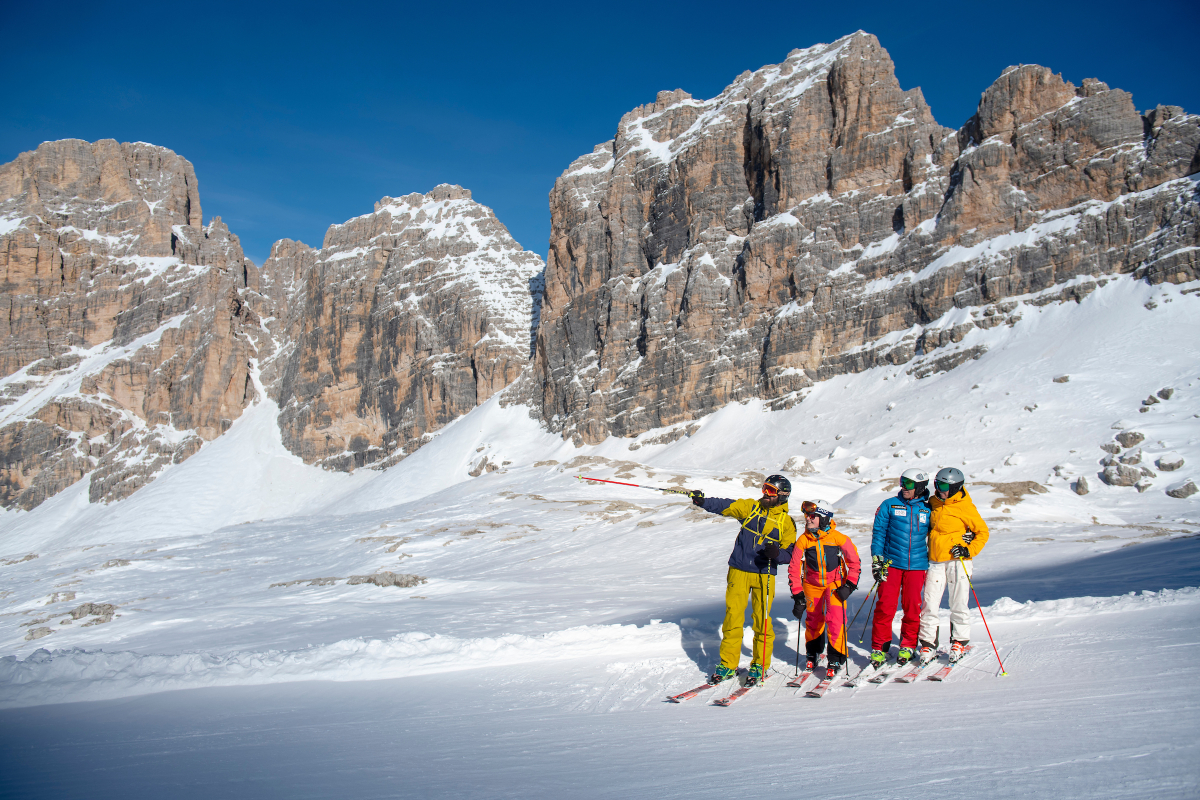
The sheer variety and the ability to tailor the daily plans as you go, says our partner, add another layer to what makes a ski safari special. “Every lunch and dinner is different, you’re experiencing amazing locations with different views everywhere, and the culture and the cuisine are so unique in this region that I think they’re not comparable to any other ski experience,” she says. If you’d like to find out more or if you’re ready to book a ski safari of your own, reach out to our Ciao Bambino Travel Advisor team — we’ll be happy to talk through the details and start the planning process.
Unlock our free guide: 6 Easy Steps to a Year’s Worth of Travel
Time flies, but memories last forever. Our simple 6-step process helps you make the most of precious vacation family time during the years with kids at home. Click to get your download!
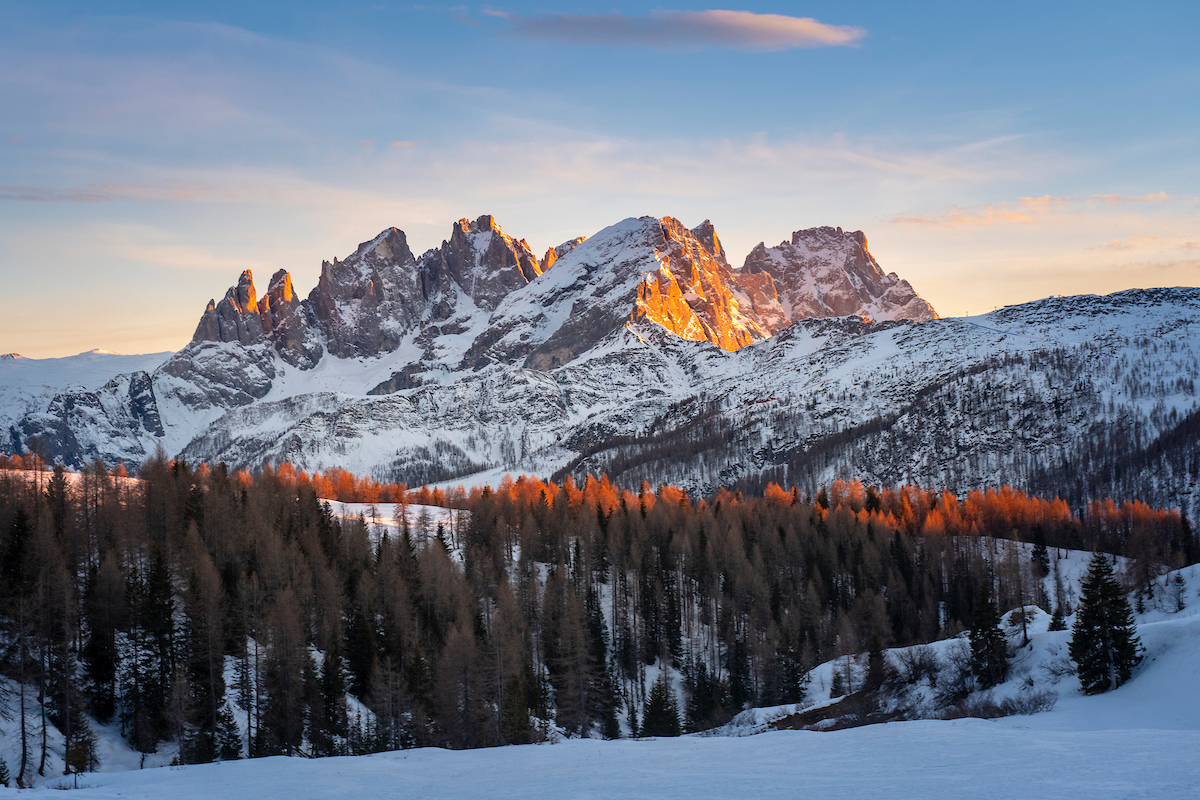
Things to Know
The ideal number of guests for a ski safari is six to eight, especially if you plan to sleep in rifugi, which are mostly too small to accommodate a larger group. That said, our partner has organized safaris for 20 or 30 people, so a multigenerational gathering or a couples’ getaway is possible too.
While you don’t have to be an expert skier, this isn’t the trip for beginners. “It’s quite intense in terms of the quantity of slopes you’re skiing and the time you’re spending on the slopes,” our partner says. Skiers should be able to handle red, or intermediate, runs with ease; these are equivalent to a difficult blue or black diamond run in the U.S.
January through March tend to be the best months for skiing the Dolomites, depending on the snowfall (though the resorts do have very good snowmaking equipment). “In March, you have longer days and more light, and you can ski longer,” our partner adds. She recommends avoiding the second and third week of February, when the region’s Carnival festivities take place and the crowds can be chaotic.
Relevant Links:
Browse all accommodations and activities in Italy on Ciao Bambino
See our favorite destinations for ski vacations around the world
Exploring the Dolomites in Italy: An active family’s dream
52 things to know before traveling to Italy with kids
The most tempting luxury family ski vacations in Europe
Editor’s note: This post was accurate when published. We advise checking independently for the latest information and updates. Ciao Bambino does not accept responsibility or liability for any errors or omissions in, or for any actions taken based on, the information presented.
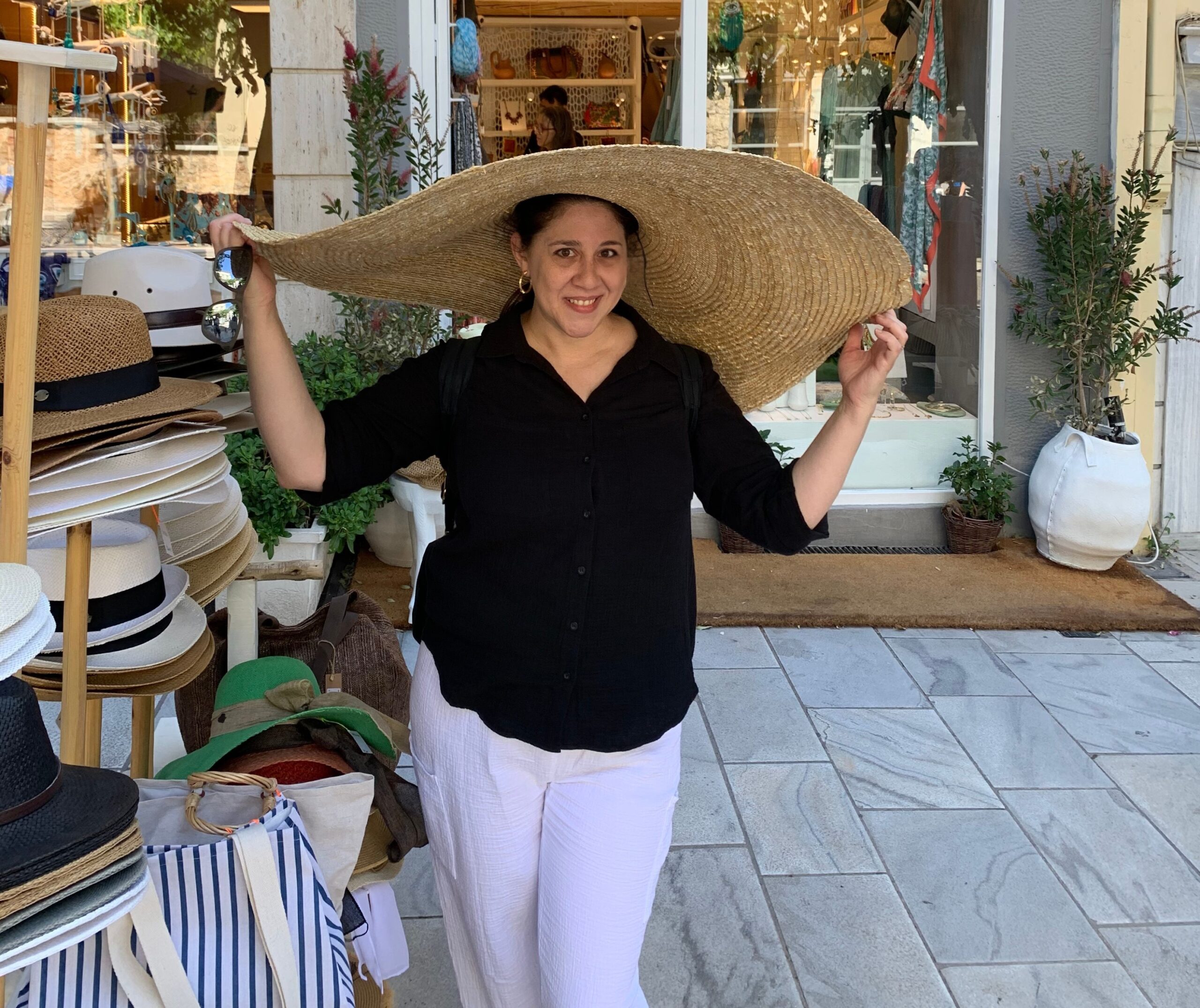
Written By
By Lisa Frederick






 travel recommendations, inspiring adventures, and exclusive travel offers
travel recommendations, inspiring adventures, and exclusive travel offers